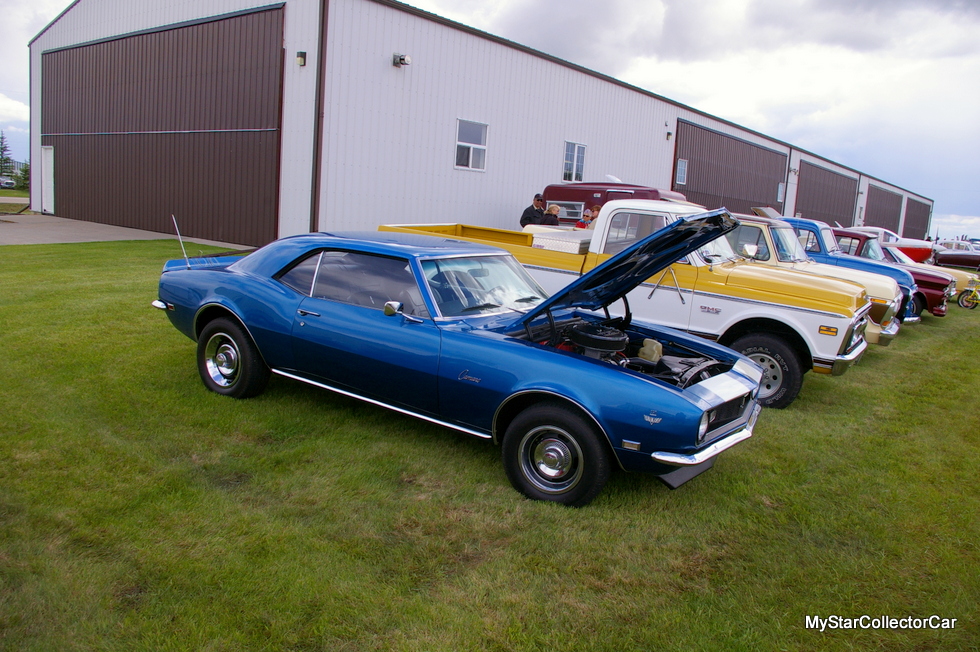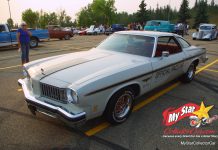A 1959 Oldsmobile 88 convertible is a classic in 2024, but there was an era when cars like that were platforms for custom builds.
The year was 1962—a time when a ’59 Olds convertible was simply a slightly outdated used car.
That’s why ‘Blue Velvet’ was built.
Jerry Sutherland
‘Speed and Custom’ was a pulp magazine dedicated to the early-mid 60s street and speed car culture. The magazine ran from August 1961 to August 1966–it was such a bible for custom guys they carried copies in their back pockets.

That was easy because ‘Speed and Custom’ was a pocket-sized magazine. They packed a wealth of great tech advice in a small package.
Their September 2024 edition had a fleet of cool cars in it, but Blue Velvet jumped off the pages for me because I’m a huge fan of the ’59 Olds—especially those massive convertibles.

This car had some serious custom touches that were typical of the early 60s custom era.
For example, there was a Tonneau cover because that was a feature that became hot in 1962. T-birds from that era were often wearing a Tonneau cover because they fit in so well with the Bullet-Bird profile. Blue Velvet’s custom Tonneau cover was a study in classic custom upholstery.

The taillights were another example of classic early 60s custom strategies.

They were dual ’59 Cadillac taillights and that’s a styling cue that still exists today. The Caddy lights worked well on a ’59 Oldsmobile—Blue Velvet is a great case study.
This car had open spiders (no wheel covers) because that was another custom styling cue that really took flight in the late 50s.

Bare wheels still looked good in ’62.

The 1959 Olds 88 convertible came with dual headlights, but there was another trend happening in ’62.

Custom car guys were going back to the single headlight look and the ‘59 Olds had its own distinct, wide-spaced quad headlight look. Blue Velvet wore headlights from a 1950 Ford on the outer edge of its custom-built stainless steel tube grille. Purist Olds guys probably wouldn’t agree, but bear in mind–this 88 convertible was an outdated used car in 1962.
Blue Velvet’s interior was button tufted—like many custom cars were for decades.

That kind of pattern was very popular in 1962, so it was the perfect touch for a project built during the Cold War era.
The ’59 Olds 88 had a factory barebones trim package—relative to other cars in ’59.

They didn’t strip much of the trim on Blue Velvet, but the back end had a custom piece below the truck where large O-L-D-S-M-O-B-I-L-E letters used to reside. Other than that, they kept Blue Velvet’s factory trim intact.

The paint scheme was another story.
Blue Velvet had blueish white paint highlighted with large dark blue scallops. Scallops were mandatory custom paint style cues in the 50s and this trend continued into the 1960s. They even had stripes in the engine compartment.

What does Blue Velvet tell us in 2024?
This car tells us there’s a timeless quality to a car like Blue Velvet because the custom touch made a used car cool.
So cool it’s still cool 62 years later.
Jerry Sutherland
By: Jerry Sutherland
Jerry Sutherland is a veteran automotive writer with a primary focus on the collector car hobby. His work has been published in many outlets and publications, including the National Post, Calgary Herald, Edmonton Journal, Ottawa Citizen, Montreal Gazette, Saskatoon StarPhoenix, Regina Leader-Post, Vancouver Sun and The Truth About Cars. He is also a regular contributor to Auto Roundup Publications.
- CLICK HERE TO SIGN UP FOR THE NEWSLETTER
- CLICK HERE to Like us on Facebook
- CLICK HERE to Follow us on Twitter
- CLICK HERE to Follow us on Pinterest
Please re-post this if you like this article.
























































